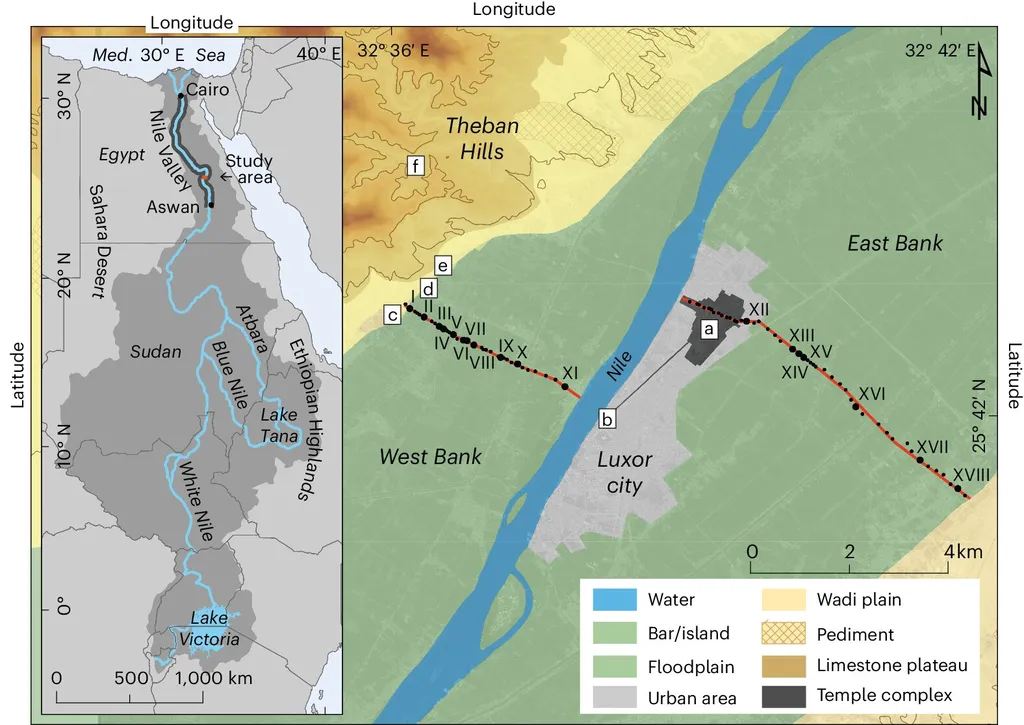In the heart of Egypt, the Nile River, a lifeline for millennia, is undergoing significant changes, and a groundbreaking study is shedding light on these transformations. Reham A. Aborahma, a researcher from the Irrigation and Hydraulic Engineering Department at Tanta University, has led a comprehensive analysis of the Nile’s Damietta branch and Sherbine reach, revealing insights that could reshape how we manage this vital waterway.
The study, published in the journal *Water Science* (translated from Arabic as “Science of Water”), leverages remote sensing and GIS tools to track morphological changes over nearly three decades. By analyzing Landsat imagery from 1987 to 2015, Aborahma and her team have quantified the shifts in the river’s course, driven by human activities and the construction of the Aswan High Dam.
“Our research provides a detailed picture of how the Nile is evolving,” Aborahma explains. “We’ve seen a significant increase in water surface area and a decrease in island coverage, which has profound implications for navigation, irrigation, and even energy production.”
The study focuses on two key areas: the Damietta branch, a major tributary, and the Sherbine reach, a smaller but equally dynamic section. The team calculated essential morphometric parameters, such as the sinuosity index and braiding index, to assess the river’s behavior. The findings reveal that the Damietta branch has become more sinuous over time, with a Sinuosity Index consistently exceeding 1.3.
These changes are not just academic; they have real-world commercial impacts. For the energy sector, understanding the Nile’s morphological shifts is crucial. Hydroelectric power plants, which rely on consistent water flow, could face challenges if the river’s course becomes more unpredictable. Additionally, sediment deposition and erosion can affect the efficiency of water turbines and the lifespan of infrastructure.
“As the Nile changes, so too must our approach to managing it,” Aborahma notes. “This research provides a foundation for developing strategies that can adapt to these dynamic conditions, ensuring sustainable water resource management.”
The study also highlights the importance of remote sensing in monitoring large-scale environmental changes. By comparing different classification methods against field data, the research offers a robust framework for future studies. This approach could be applied to other rivers worldwide, providing valuable insights into their morphological evolution.
As Egypt and other nations along the Nile continue to develop, the need for accurate, data-driven understanding of the river’s behavior will only grow. Aborahma’s research is a significant step in that direction, offering a blueprint for how technology and science can work together to manage one of the world’s most critical waterways.
In the ever-evolving landscape of water resource management, this study stands as a testament to the power of innovation and the importance of staying ahead of the curve. As Aborahma puts it, “The Nile is not just a river; it’s a lifeline. Understanding its changes is key to securing our future.”

